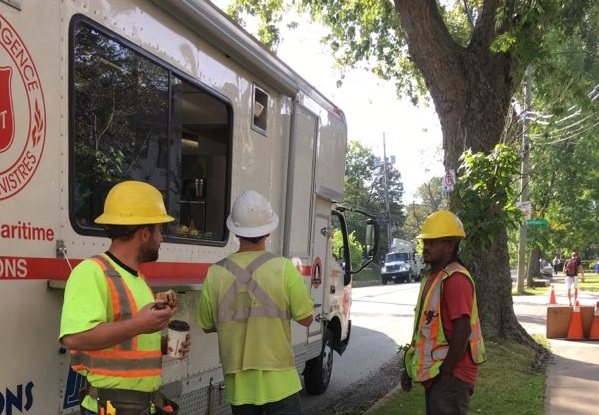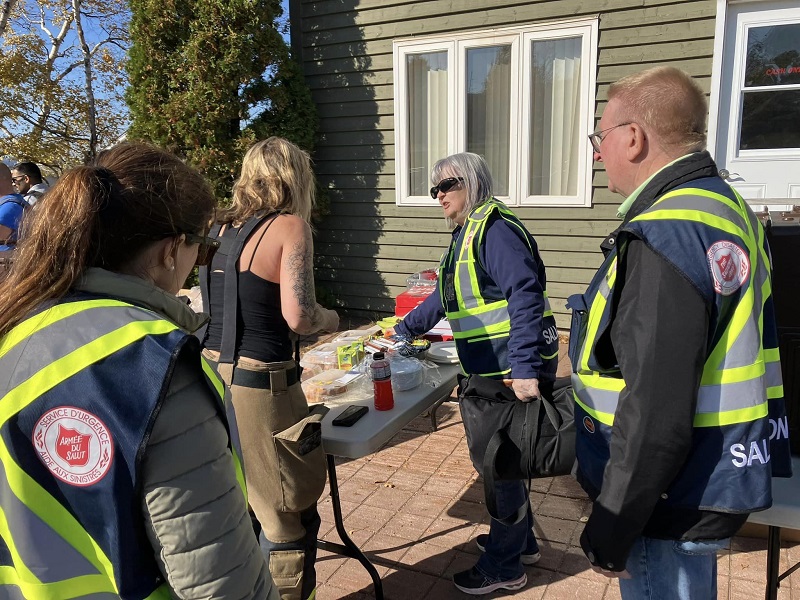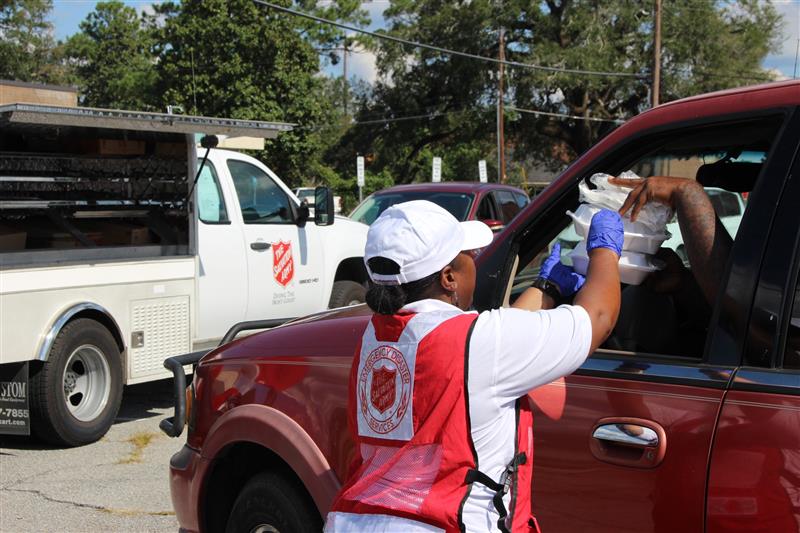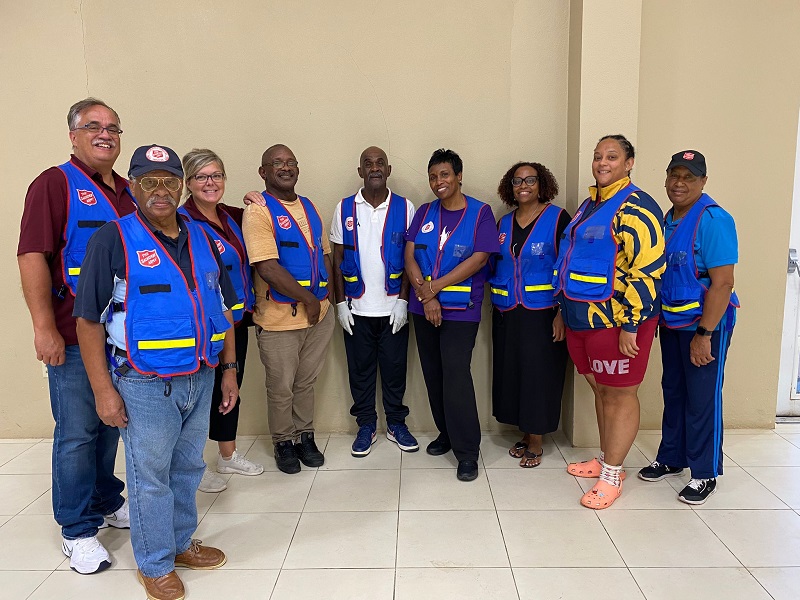Emergency Disaster Services in Action

Since the 1917 Halifax Explosion, The Salvation Army’s emergency disaster services (EDS) in Canada have responded to incidents of various sizes and scopes. Today, they play a critical role in all aspects of the emergency management continuum: mitigation/prevention, preparedness, response and recovery.
Response to Flooding in Three Provinces
In April 2019, communities across Ontario, Quebec and New Brunswick declared states of emergency due to rising waters. When thousands were forced from their homes, EDS personnel mobilized to affected areas to provide food, hydration, practical help and emotional and spiritual care to first responders, volunteers and residents, who were flooded or at risk of flooding.
In Ottawa, over 2,000 homes were affected and, as waters continued to rise, more and more volunteers came out to fill sandbags to protect homes. To meet the increase in the number of people needing our food services, additional personnel came from across the country to assist with relief efforts. The Army also supported people affected by flooding in Huntsville and Bracebridge, Ont.
In Rigaud, Que., which sits on the Ottawa River, The Salvation Army helped those affected. In New Brunswick, Salvation Army personnel mobilized to Fredericton, Sussex, and Saint John to offer assistance that included meals, showers, food baskets, vouchers and other emergency aid.
Hurricane Dorian
Hurricane Dorian ripped through Atlantic Canada in early September 2019. Damage was extensive, and clean up lasted much longer than expected. Halifax, Moncton and much of Prince Edward Island suffered a large portion of the damage.
In all three areas, Salvation Army EDS teams answered requests to provide food, hydration, and emotional and spiritual care to those affected.
In the downtown core of Halifax, The Salvation Army’s community response unit roamed the streets in one of the hardest-hit areas to support workers assisting with clean-up, recovery and restoration of power. In addition, EDS personnel provided meals and emotional and spiritual care at three warming centres.
In New Brunswick, dedicated volunteers travelled with the community response unit, offering meals such as burgers and stir-frys to first responders and volunteers supporting flood-relief efforts. In Charlottetown, heavy rains were quick and powerful, and The Salvation Army opened its doors as an emergency shelter, serving coffee and warm meals.
While each disaster creates unique circumstances and special needs, Salvation Army disaster-relief personnel are often assigned specific roles by emergency preparedness authorities. Whether a local incident or a major catastrophe, EDS personnel are often among the first to arrive on the scene and the last to depart.




